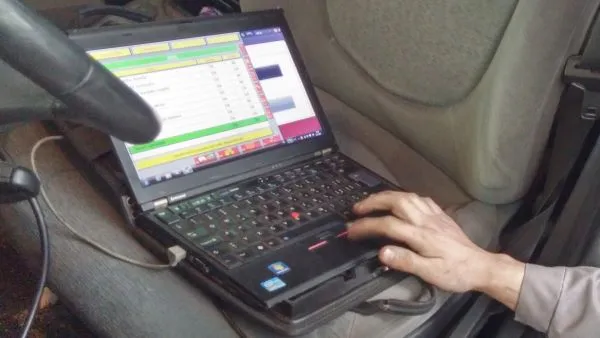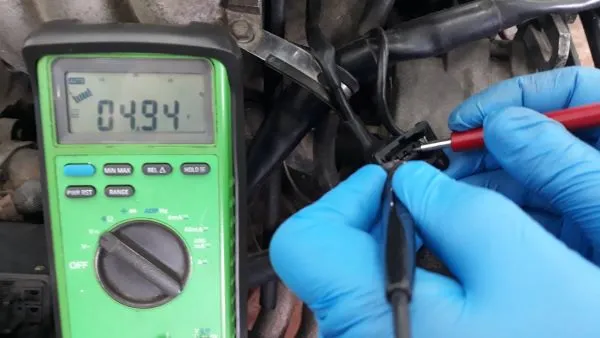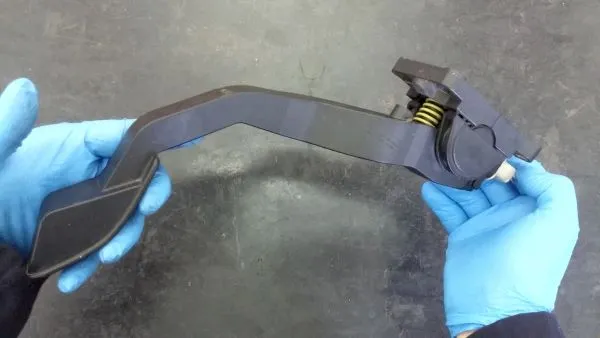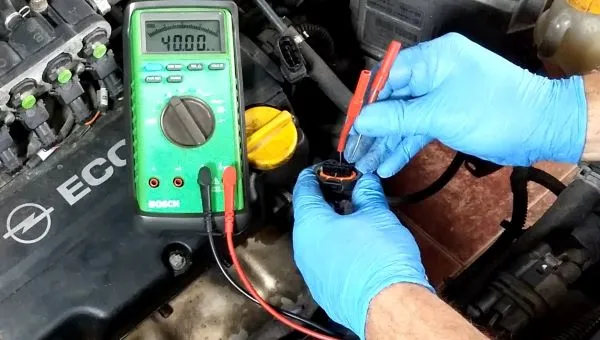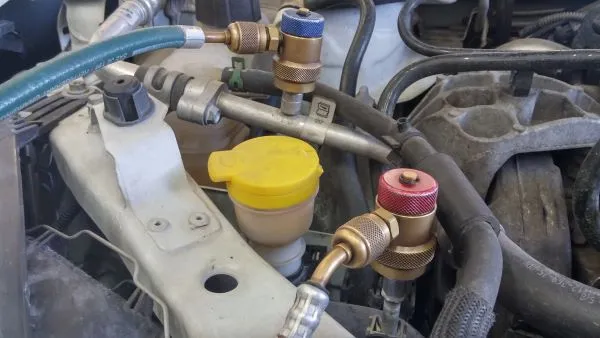Auto Electronics
Auto electronics are increasingly dominant in modern vehicles, where they manage various systems and enable better functionality and safety while driving.
In the section Auto Electronics – Diagnostics and Repair, you will learn how to test and repair electronic systems and devices. The development of electronics did not bypass the automotive industry. With the introduction of strict regulations on exhaust gases, safety, and security, vehicle manufacturers have developed many electronically controlled systems. Competition and customer demands have expanded the application of electronic systems in the comfort field.[1]
Vehicles have many electronic systems for controlling the operation of mechanical and electrical systems. These systems also control and manage certain processes on the vehicle, such as safety, protection, multimedia, etc.
Automotive Electronics
Electronic work control is performed through a network of electronic components. The central place is occupied by the Electronic Control Unit, which controls and manages a process, monitors the correctness of all components and functions, communicates with other control units, and informs the driver about the system’s state on the dashboard and information panel. Via the diagnostic connection, communication with service technicians is carried out using data exchange, which facilitates correctness checking and error detection.
Auto electronics require a different approach to diagnostics, fault finding, and repair than mechanical and electrical systems. This part of the e-book contains procedures for testing, repairing, and replacing parts of electronic systems.[2]
Car Electronics – Topic Overview
Auto Electronics – Diagnostics and Repair is part of the AutoEdu e-Book and deals with procedures for servicing car electronics. It has nine chapters: Automotive sensors, Ignition systems, Gasoline injection systems, Diesel injection systems, Automatic transmissions, Electronic stability control, Safety systems, Protection systems, and Comfort systems. In each chapter, there are descriptions of the procedure for diagnostics of correctness, repair, and replacement of electronic components.
Sensors are the most common elements in electronic systems. Sensors of the same type have the same test procedure regardless of which system they belong to. That is why general sensors and their diagnostic and troubleshooting procedures are presented within this group. These procedures are standardized and recommended by vehicle and component manufacturers.[3]
Ignition Systems
This chapter covers maintenance, testing, repair, and adjustment procedures for all ignition systems in gasoline engines. The classic ignition system includes a mechanical switch and distribution, transistor ignition, an electronic ignition system with distribution, single-spark ignition, and dual-spark ignition systems without distribution. Diagnostic and measurement procedures for analyzing the condition of the ignition system are presented.
Gasoline injection system service procedures are given in this chapter. System elements are grouped into air intake, fuel supply, engine, and exhaust system subgroups. Also, an overview of the specific servicing of individual injection systems, such as central, indirect into the intake line in front of the intake valve, and direct injection, is given.
Diesel Injection Systems
Procedures for diagnostics, measurements, troubleshooting, component replacement, and adjustment of the diesel injection system are given in this chapter. All procedures are grouped according to the type of injection system: EDC, VP, Unit-injector, and Common Rail.
Automatic transmissions
Electronically controlled transmissions have defined diagnostic, maintenance, and repair procedures. Part of the servicing can be done in workshops. Complex automatic transmission repairs are performed at specialized workshop centers.
Electronic Stability Control
Electronic vehicle stability systems are mandatory equipment on cars, and the scope of control and the number of systems have only increased over time. Electronic braking, traction control, driving dynamics control, speed, and distance control are systems that help the driver control the car’s stability while driving. This part provides procedures for testing and servicing electronic stability systems according to the car manufacturer’s recommendations.
Automotive Safety Systems
This part of the AutoEdu eBook outlines the procedures for diagnosing, testing, and repairing airbags, belt tensioners, suspension, steering, comprehensive vehicle protection, ADAS, and other electronic systems that affect the active safety of cars, passengers, and other road users.[4]
Automotive Protection Systems
This section of Car Electronics explains how car security systems (central locking, coding, alarm systems, and others) are tested, repaired, and upgraded. It also provides service procedures recommended by vehicle, device, and system manufacturers.
Automotive Comfort Systems
Various electronic systems on vehicles are increasingly present, providing additional comfort to drivers and passengers. Multimedia, navigation, and air conditioning are only part of the comfort system that requires careful maintenance, updating, and repair according to precisely established procedures. In this section, you can find out the recommended procedures for individual comfort systems.
Online Auto Electronics Course
Through detailed descriptions of car electronics repair procedures, you can improve your knowledge and expand the skills of an auto electronics technician.
The key to any successful tip is clarity of description. We tried to make the given instructions simple, readable, and accurate. We hope that the given descriptions of auto electronics repair are useful and that, based on this, the reader can more easily understand the procedure and apply the knowledge to auto electronics repair.
AutoEdu, as an eBook and an online auto electronics course, is constantly updated with new topics and repair procedures. We aim to provide you with the information you need to successfully maintain and service automotive electronic systems.











